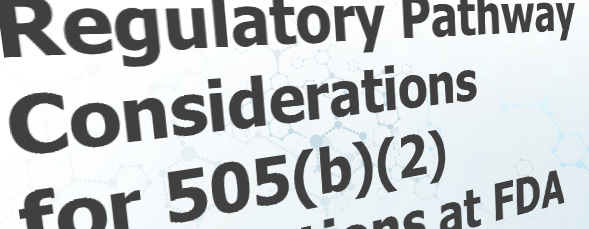A number of years ago, I was reading a blog by Kurt Karst (here), the title of which included “A 505(b)(2) NDA in Search of a Basis for Submission and Approval…” Apart from the interesting details covered in the blog about how a product was received under the 505(b)(2) pathway, it highlighted a trend that was in the making.
In an article published by the Journal of Clinical Pharmacology (here), Sheetal Agarwal et al. calculate that, over a span of three years (during 2010-2012), 69 new molecular entity (NME) NDAs and 132 505(b)(2) NDAs were approved by the Agency. Their survey indicated that most of the 505(b)(2) NDAs approved between 2010 and 2012 were classified as Type 5 (40%), followed by Type 3 (30%). Other types of approved 505(b)(2) NDAs included Type 4 (20%), Type 7 (8%), and Type 2 (2%). So, the industry is scrambling to leverage this pathway to come up with differentiated products or to serve unmet needs, as well as to hedge against ever increasing competition and the price erosion of generics. Everyone from New Jersey to Mumbai is now talking about 505(b)(2).
It was naturally a hot topic at the 7th Annual Global Pharma Regulatory Summit 2018 that was held in Mumbai during May 30 through June 1 (here). In her presentation, Dr. Aloka Srinivasan (here) explained that the objective of a 505(b)(2) NDA is to leverage existing knowledge about a drug’s safety and efficacy to the extent relevant, and to avoid studies that are not scientifically necessary, or are duplicative, so that adequate focus can be placed on the development of data to support different or innovative aspects of approved drugs. NDAs submitted under 505(b)(2) may include, but not be limited to, alternative dosage forms with improved solubility, altered PK profiles leading to changed dosing regimens, and enhanced efficacy and/or safety profiles due to targeted delivery. With the conundrum related to GDUFA, and with the FDA’s significant lack of attention and action on ANDA suitability petitions for certain permitted changes to existing products, many generic sponsors have started looking at 505(b)(2) as a viable option to bring some of their products to the market more quickly. While this is a possibility, the 505(b)(2) pathway could turn out to be expensive and arduous if not planned correctly.
With more interest and use of the pathway, more and more issues are being identified and questions are being asked. In October 2017, the FDA published a draft guidance for industry on Determining Whether to Submit an ANDA or a 505(b)(2) Application (here). Although the guidance addresses a number of the key issues and provides good guidance, new scenarios and issues keep coming up. One issue that appears to be shrouded in mystery is the therapeutic equivalence of products approved via the 505(b)(2) path. A very careful evaluation of the criteria that the FDA uses to determine therapeutic equivalence is required before such projects are initiated to manage expectations.
As we listened Dr. Srinivasan discussing the rewards and challenges related to 505(b)(2) applications, the attendees were anxious to know the pros and cons of traveling down this path, and how to select their targets judiciously. It is clear, however, that the trend is well underway as many firms are trying to get on the 505(b)(2) path to reach their own goals.



